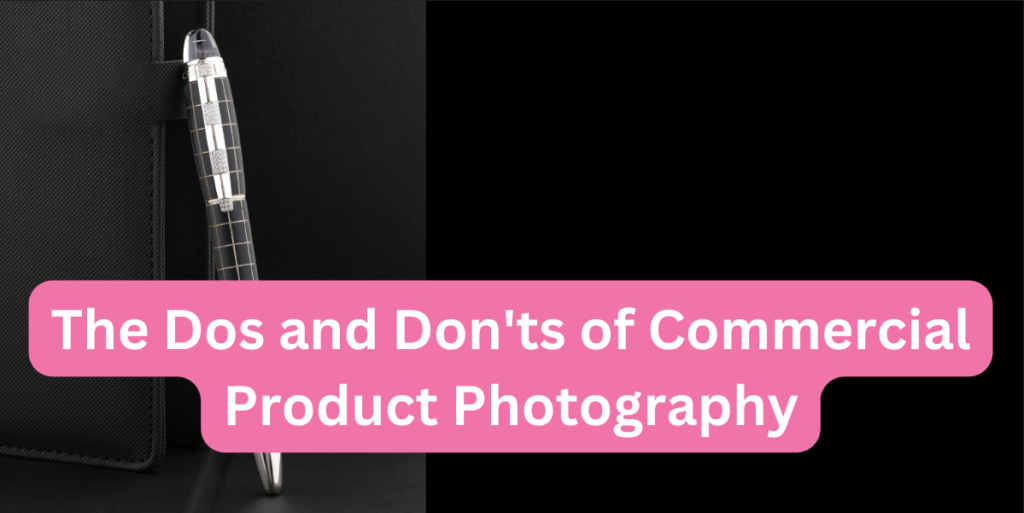Commercial product photography is essential for any business that sells products. Whether it’s for a website, social media, or print marketing, high-quality product images can make all the difference in attracting potential customers. However, taking great product photos is not as simple as just pointing and shooting. There are certain dos and don’ts that you should be aware of to ensure that your product photos are visually appealing and effective in driving sales.
Dos for Commercial Product Photography:
Use proper lighting:
Good lighting is critical for capturing high-quality product images. Always try to shoot in natural light or use artificial lighting sources like studio lights or ring lights. When shooting in natural light, try to avoid direct sunlight, as it can create harsh shadows and overexposure. For indoor shots, ensure that your lighting is evenly distributed and that there are no dark or shadowy areas for commercial photography.
Choose the right background:
The background of your product photo is just as important as the product itself. A simple, neutral background can help highlight the product and keep the focus on it. White or light gray backgrounds are popular choices for product photography, but you can also experiment with other colors or textures that complement your product.
Use a tripod:
Keeping your camera steady is crucial for capturing sharp, clear images. A tripod will help prevent camera shake and ensure that your product images are in focus. It also allows you to easily make minor adjustments to your camera’s position and angle.
Highlight unique features:
When photographing your product, try to capture its unique features and qualities. For example, if you’re selling a handbag with intricate stitching or detailing, zoom in on those areas to showcase the craftsmanship. This will help make your product stand out from similar items on the market.
Edit your photos:
After capturing your product images, take the time to edit them to ensure they are visually appealing. Adjust the brightness, contrast, and saturation levels, and crop the image if necessary. Be careful not to over-edit, as this can result in an unrealistic image that misrepresents your product.
Don’ts Commercial Product Photography:
Use distracting props:
While props can add interest to a product photo, they can also distract from the product itself. Avoid using props that are irrelevant or that take away from the main focus of the image. Keep it simple and let the product speak for itself.
Use flash:
Flash photography can create harsh shadows and overexposure, making your product look unnatural and unappealing. Instead, try to use natural or artificial lighting sources to achieve a softer, more even light.
Shoot at a low resolution:
Low-resolution images can appear pixelated and unprofessional, which can negatively impact your brand image. Always shoot at the highest resolution possible to ensure that your product images are clear and visually appealing.
Neglect the product’s context:
While it’s important to showcase your product, it’s also important to give it some context. For example, if you’re selling a coffee mug, you could show it in use with a steaming cup of coffee next to it. This can help potential customers visualize how the product will fit into their own lives.
Misrepresent the product:
It’s important to ensure that your product photos accurately represent the product itself. Avoid using deceptive angles or lighting that can make the product look different than it actually is. This can lead to disappointed customers and damage your brand’s reputation.
Conclusion:
Commercial product photography is an important aspect of any business that sells products. By following these dos and don’ts, you can ensure that your product photos are visually appealing, accurate, and effective in driving sales. Remember to keep it simple, focus on the product, and let its unique qualities shine through.


